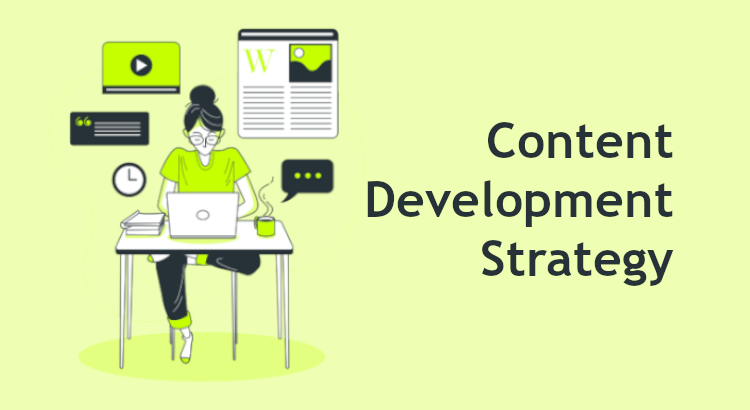Developing a successful content development strategy is vital for businesses seeking growth and positive brand experiences. This comprehensive guide outlines 11 crucial steps, from goal setting to tracking performance, ensuring a well-organized content development process.
Related Article: Content Marketing Tips: Strategies for Captivating Your Audience
What Is Content Development?
Content development involves planning, creating, distributing, and reviewing content (such as blog posts and videos) tailored to a specific audience and purpose. It is essential to customer service, sales, content marketing, and overall communication strategy.
Why Is Content Development Vital for Your Business?
A content development strategy becomes essential because it can save you:
- Time: Efficient planning and adherence to deadlines within the content development strategy prevent overwork, saving time and ensuring a streamlined and organized process.
- Effort: Thorough research tailors content, reducing duplication and enhancing productivity, conserving effort for a more focused and effective approach.
- Money: Careful planning, selective channel selection, and performance tracking optimize expenditures, guaranteeing economical and favorable return on investment in content creation.
11 Steps to Successful Content Development Strategies
Step 1: Goal setting
Define measurable goals aligned with marketing strategy, ensuring content contributes to broader business objectives, providing tangible value, and establishing a clear direction for each piece.
Step 2: Audience Research
Conduct thorough audience research by creating a buyer persona profile. Utilize demographics, psychographics, goals, pain points, impactful factors, and purchasing process anatomy for meaningful insights and strategic content development.
- Demographics (age, gender, location)
- Psychographics (values, standpoints, goals)
- Professional/personal goals (beliefs, values)
- Pain points and challenges
- Impactful factors and information sources
- Purchasing process anatomy (frequency, decision-making process)
Step 3: Storytelling
Infuse brand uniqueness into content, prioritizing positive impact, honesty, and value. Create engaging narratives that resonate with the audience, fostering a connection and trust.
Step 4: Funnel Analysis
Tailor CTAs and formats based on funnel stages, recognizing diverse user behaviors. Optimize content for effective engagement, understanding the varying levels of brand familiarity.
Step 5: Planning
Utilize shared calendars, link content to campaigns, and set realistic deadlines. Streamline the planning process for efficient content development, ensuring consistency and alignment with overall goals.
Step 6: Ideation
Generate ideas through brainstorming, competitor research, and customer surveys. Prioritize topics aligned with user search intent, validating and refining to address specific pain points and challenges.
Step 7: Briefing
Provide comprehensive briefs for internal and external writers, including goals, references, and brand values. Clarify feedback and revision processes, fostering clear communication for optimal content creation.
Step 8: Writing
Approach writing as a multistep process, focusing on structure, word count, and tone of voice. Utilize tools for optimization, ensuring readability, and implementing effective storytelling techniques. For optimized content, consider relying on professional content writing services.
Step 9: Optimization
Optimize content for both people and search engines, referencing long-tail and question keywords. Ensure a deep understanding of search intent, incorporating visuals and rich media for enhanced engagement.
Step 10: Promotion
Align content promotion with set goals and chosen channels. Develop an omnichannel distribution strategy, repurposing content and nurturing relationships with industry experts for authoritative backlinks.
Related Article: Content Distribution: Are You Reaching the Right Audience?
Step 11: Tracking
Implement a continuous tracking cycle involving auditing, updating content, and performance analytics. Monitor internal and external publications, ensuring efficient distribution channels and sustained success. Leverage tools like Google Analytics for comprehensive tracking and insightful analytics.
Improving Your Existing Content Development Process
1. Document your existing process and strategy
Identify and improve interconnections, ensuring collaboration between SEO and content marketing teams to enhance efficiency and effectiveness.
2. Bring your team together
Foster collaboration through regular brainstorming sessions. Align customer-related data with topic ideas, evaluating the content team’s needs for potential expansion.
3. Make a list of your business goals and metrics
Break down goals for each campaign, considering metrics beyond payments. Assess customer engagement, leads, mentions, and referrals for comprehensive content success.
4. Sort through your existing and planned content
Assess existing and planned content, identifying gaps in user acquisition techniques. Consider gated content for lead generation, enhancing the variety and effectiveness of content offerings.
5. Redo your in-market audience research
Ensure content aligns with the target audience, considering changes in audience behavior post-Covid. Adapt content strategies to match evolving market dynamics and audience expectations.
6. Build connections with industry experts
Build collaborations with industry experts, enhancing authority and streamlining content production and promotion through valuable partnerships.
7. Return to your audit results
Return to audit results, updating and aligning content with brand tone and messaging. Repurpose top-performing content into new formats, ensuring continued relevance and engagement.
Closing Thoughts on Content Development Strategy
A successful content development strategy is a dynamic and interconnected process that requires ongoing improvement. Whether you’re building a strategy from scratch or refining an existing one, aligning content with business goals and user needs is key to sustained growth and impact.


